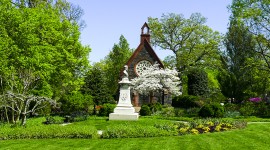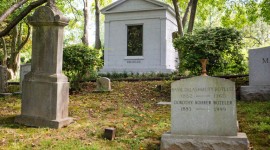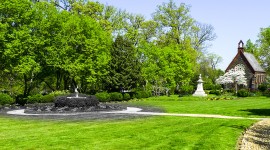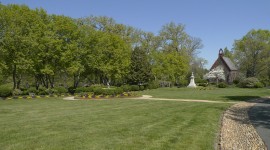Regulatory Flip-Flop Threatens D.C.’s Most Important Rural Cemetery
In summer 2015, a mausoleum was erected to house the remains of legendary Washington Post editor Ben Bradlee on the north side of the Ellipse of Oak Hill Cemetery, displacing the central fountain and its associated circulation route. According to Politico, Bradlee's family had purchased another site in the cemetery ten years earlier, but more recently, cemetery officials sent his widow, Sally Quinn, "a letter, noting new, larger spots were open and for sale," and "Quinn pounced at the opportunity to create a much grander final resting place."
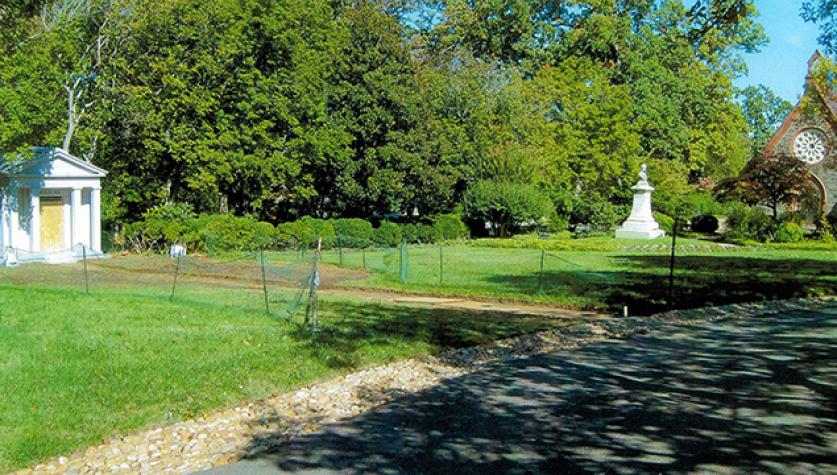
Established in 1849, Oak Hill is the first and most significant rural cemetery in the nation’s capital. The Ellipse, largely unchanged since the 1880s, is part of the historic entrance ensemble and is an open area designed to provide a visual respite, affording views out to the cemetery and its undulating topography. It is framed by the Renwick Chapel (which is listed in the National Register of Historic Places) and a gatehouse. Clearly visible from the adjacent R Street, the new mausoleum faces south onto the open lawn of the Ellipse and establishes a new perpendicular axis from its prominent central position. It has thus disrupted the historic entrance ensemble, thereby diminishing the integrity of the setting of the Renwick Chapel, the gatehouse, and the Ellipse. The mausoleum also adversely impacts the scenic views once afforded from the elevated plateau into the terraced grounds below.
This is a surprising development because it has occurred within the Georgetown Historic District, which is subject to oversight by many organizations, including the D.C. Historic Preservation Review Board, the U.S. Commission of Fine Arts, and the Old Georgetown Board (Stephen Muse, the chair of the Old Georgetown Board, is the Bradlee mausoleum’s architect). However, a construction permit, which would have triggered a review by one or more of these organizations, was never requested, and there was no oversight.
TCLF made inquiries about the permitting process, and on October 21, 2015, the D.C. Department of Consumer and Regulatory Affairs (DCRA), which issues building permits, determined that a construction permit was required for the mausoleum. However, for the next several months, no application for such a permit was filed. On January 13, 2016, TCLF inquired via email about the status of the permit and received no reply. In May 2016, several reporters following the story notified TCLF that the DCRA had reversed its earlier decision and concluded that a permit was not required. TCLF contacted DCRA on May 3, 2016, and received the following statement in an email the next day:
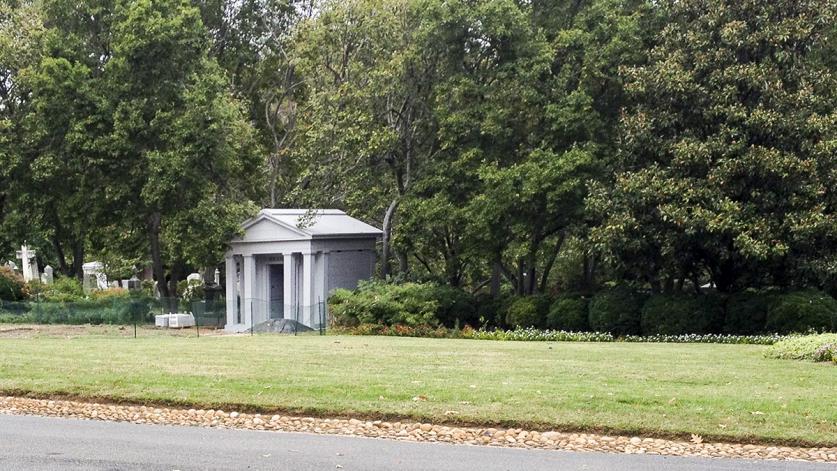
"After research and in depth discussion on this matter, our code official have [sic] determined that there is minimal or no life/health/safety risk for mausoleums less than 250 square feet size [sic]. As a consequence no permit was required in this case. Our code official (DCRA director) has the final authority on interpretation of this matter."
It was only on June 9, however, that TCLF received an official notification of the new rule from the DCRA director. This new rule, creating the exemption, is notable for several reasons:
- It seems to ignore entirely that the mausoleum was constructed within the Georgetown Historic District, which is subject to close public scrutiny of almost all new construction (a 50-square-foot garden shed built in the historic district, for example, requires a building permit and approval by several organizations, including the D.C. Historic Preservation Review Board, the U.S. Commission of Fine Arts, and the Old Georgetown Board).
- The 250-square-foot threshold seems arbitrary (and exempts the mausoleum construction at issue).
- There is no explanation or identification of the parties who were consulted (for example, did DCRA consult with stewards of other nationally significant rural cemeteries, such as Mount Auburn in Cambridge, Massachusetts, and Green-Wood in Brooklyn, New York, about best practices for their iconic entrance ensembles?).
- There is no mention of what other criteria contributed to the rule that was finally established.
- There was no citation of a precedent (as one would expect, if indeed this is an interpretation of existing policy)
- The legal and official rule-making procedure, which includes options for public input, was never undertaken (as one would expect, if, in fact, DCRA’s decision constitutes a new rule).
On June 20, 2016, TCLF and the D.C. Preservation League (DCPL) filed an administrative appeal of the new rule. At a status hearing before an administrative law judge on June 29, attorneys for DCRA maintained that there was a “longstanding non-written policy” of not issuing permits for mausolea. They, along with an attorney for Oak Hill Cemetery (which has been granted intervener status in the case) challenged both TCLF's standing to pursue administrative actions and the timeliness of TCLF's administrative appeal concerning the creation of the new rule.
Over the coming weeks and months, TCLF, DCPL, DCRA, and Oak Hill Cemetery will have options to file motions and responses. Should all of that not resolve the issue, a court date has been set for early October 2016. Meanwhile, TCLF and DCPL have requested documents from DCRA that would chronicle how the new rule was developed, with whom the agency communicated and consulted, and any other criteria that contributed to creating the new rule.
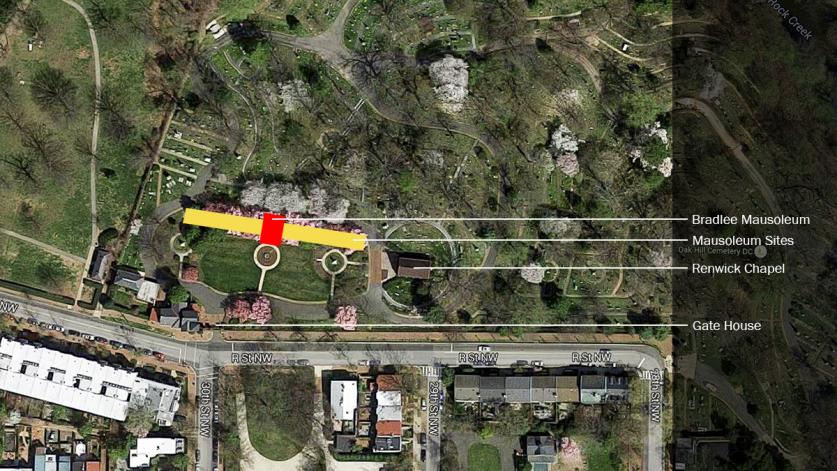
The urgency for a resolution is growing. Oak Hill Cemetery’s website has a diagram accompanying the offer of cemetery plots, which indicates that the Bradlee mausoleum will be the first of a wall of mausolea to be constructed at the cemetery's historic entrance. If these plans move forward, the iconic Ellipse would become filled by a visually imposing and impenetrable edifice—impeding views from within the entrance ensemble and along R Street. Moreover, the new rule that DCRA has established would apply to all of the city’s historic cemeteries, which could lead to more negative impacts.
Along with requiring building permits for such construction, which would trigger reviews by the appropriate authorities, TCLF suggests that a Cultural Landscape Report (CLR) be undertaken for Oak Hill, to guide future management decisions for this nationally significant landscape and to form the foundation for any application for listing the cemetery in the National Register of Historic Places or as a National Historic Landmark (the cemetery is currently a "contributing feature" in the Georgetown Historic District, which is a National Historic Landmark, but is not itself so designated).




